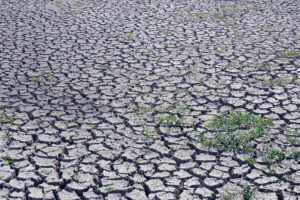




Philippines Trade Update: Trade trajectories trend along
 DOWNLOAD
DOWNLOAD

Policy Rate Updates: Double cut finale
 DOWNLOAD
DOWNLOAD

Monthly Economic Update: One for the road
 DOWNLOAD
DOWNLOAD


Agricultural output likely shrank in Q2 due to El Niño

The Philippines’ overall agricultural output may have declined in the second quarter after crop production likely bore the brunt of droughts caused by the El Niño weather phenomenon, analysts said.
University of Asia and the Pacific (UA&P) Center for Food and Agribusiness Executive Director Marie Annette Galvez-Dacul said in a Viber message that farm production likely fell by 1.5% to 2.5% in the April-to-June period due to El Niño.
If realized, this would be worse than the 1.3% decline in the value of production in agriculture and fisheries seen in the second quarter of 2023. It would also be a reversal of the 0.05% growth in the first quarter of 2024.
El Niño, which began in June 2023, brought below-normal rainfall conditions, dry spells and droughts that affected crop production.
In early June, the state weather bureau declared the end of the El Niño although dry spells persisted in some parts of the country.
“I am expecting a drop due to the lingering effects of El Niño during the second quarter. Some of the crops may have survived, but output and productivity would have been affected due to water stress,” Federation of Free Farmers National Manager Raul Q. Montemayor said in a Viber message.
The Philippine Statistics Authority is set to release second-quarter data on farm output on Aug. 7 (Wednesday). The agriculture sector contributes about a tenth of the country’s gross domestic product (GDP) and provides around a quarter of all jobs.
UA&P’s Ms. Dacul said she expected a decline in crops and fisheries output in the second quarter due to the unseasonably warm weather brought by El Niño.
The crop subsector contributes more than half to the country’s overall agricultural production. As of the first quarter, rice contributed about 20% to the total, while corn accounted for 8%.
On the other hand, Philippine Chamber of Agriculture and Food, Inc. President Danilo V. Fausto said farm growth for the second quarter was likely flat.
“(El Niño) didn’t hit too hard but there was still an effect. So, whatever we are expecting to have an increase in yield, in output, it might be dampened because of the El Niño,” Mr. Fausto said in a phone call.
Farm damage due to El Niño totaled PHP 15.3 billion, with rice and corn being the most affected crops, according to the Department of Agriculture’s (DA) final bulletin issued on Aug. 2.
The DA reported that total crop damage was at 784,344 metric tons covering 270,855 hectares of farmland, of which 68% or 184,182 hectares were deemed recoverable. It had affected 333,195 farmers and fisherfolks.
Ms. Dacul said that the poultry sector likely posted an increase in output in the second quarter, while livestock production may have been flat.
LA NIÑA
This year, the DA is targeting 1-2% agricultural growth, accounting for the effects of the El Niño and La Niña weather events.
Agriculture Secretary Francisco P. Tiu Laurel, Jr. said last month that the DA’s target would be achievable if no major typhoons hit the country during the second half of the year.
“For the second half, we are challenged because of La Niña. So, the agriculture sector really will be (impacted by it),” Mr. Fausto said.
The Philippine Atmospheric, Geophysical, and Astronomical Services Administration said that there is a 70% likelihood of La Niña occurring during the months of August, September, and October. It would increase the likelihood of tropical cyclone activity in the coming months.
Roehlano M. Briones, a senior research fellow at the Philippine Institute for Development Studies, said that agricultural growth would likely be at 1% for the full year if the livestock, poultry, and aquaculture subsectors recovered.
“The start of rains in July would have helped farmers recover, but the recent typhoon shows how unpredictable the weather can be and how vulnerable agriculture is to natural calamities,” Mr. Montemayor said.
However, former Agriculture Undersecretary Fermin D. Adriano said in a Viber message that it is unlikely that the agricultural output would hit the DA’s target for the year.
“Now with incoming La Niña, further crop damage will be experienced. Assuming the optimistic projection is true, where will growth come from?” he asked. – Adrian H. Halili, Reporter
This article originally appeared on bworldonline.com





 By BusinessWorld
By BusinessWorld